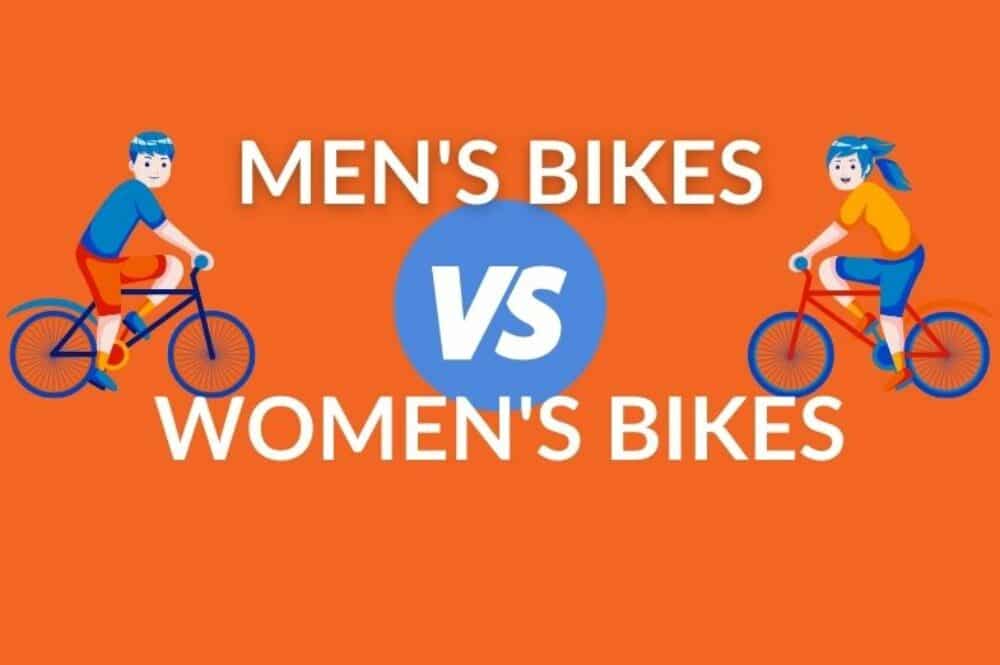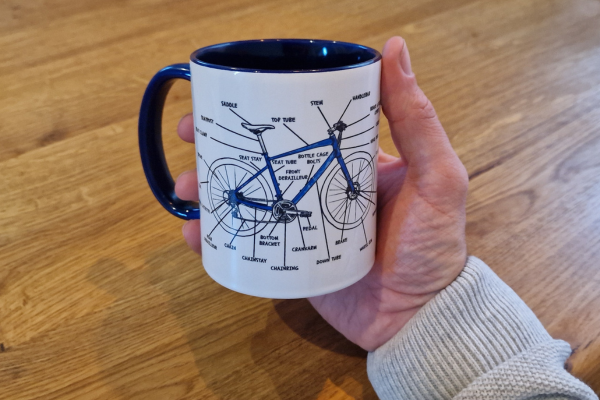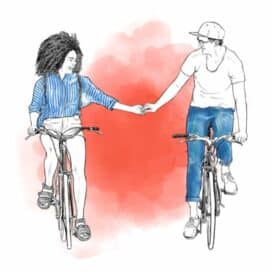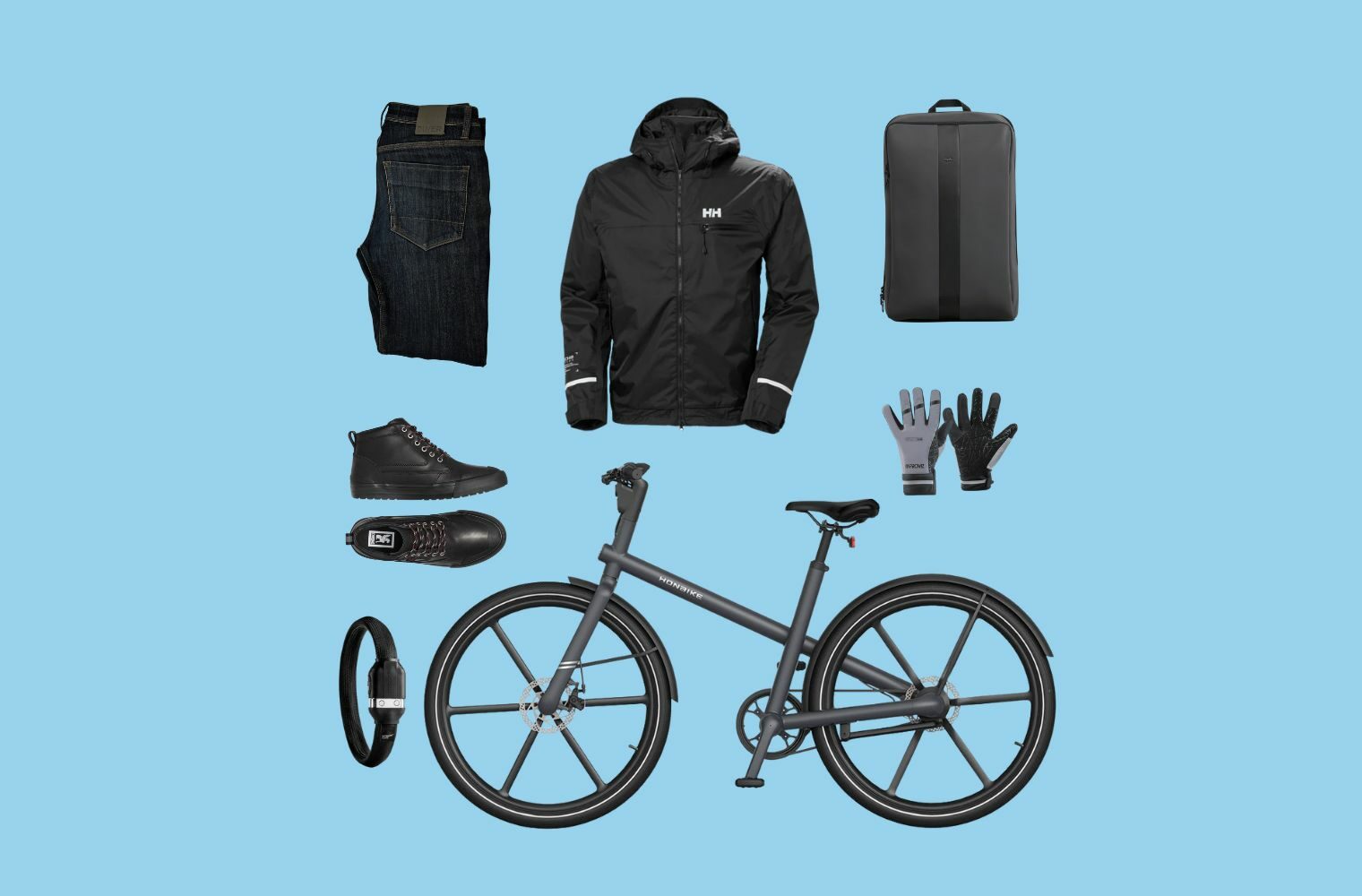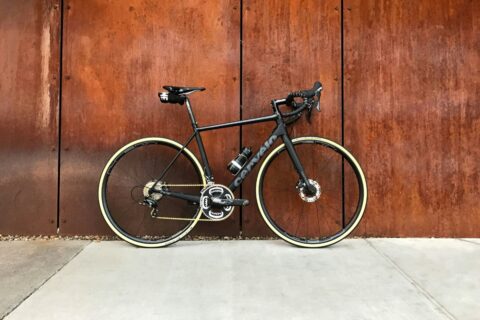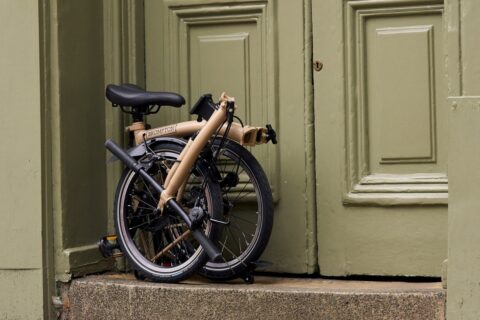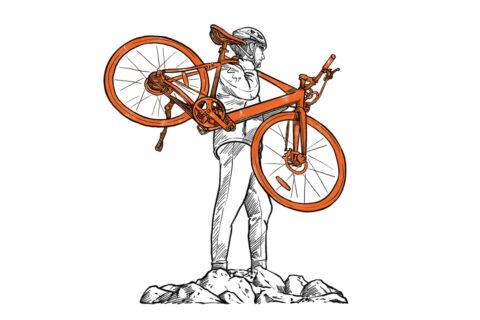This post may contain affiliate links, which help to keep Discerning Cyclist rolling. Learn more.
Gendered bikes are causing a bit of a stir.
In the age of gender revolution, you may be wondering – is there really a difference between ‘mens’ and ‘womens’ bikes? Are they outdated, obsolete terms with no real significance? Are they simply a marketing ploy, or is there actually some value or benefit in the build of gendered bikes?
While we’re here – what about unisex bikes? How are these bikes built to accommodate all genders, and can you ride a bike made for the opposite gender?
Well, the truth might surprise you. Ready to learn more? Stick with us for a more in-depth look at unisex and gendered bikes.

Is There a Difference Between Men’s and Women’s Bikes?
The crank length, seat size, and handlebars differ on men and women’s bikes.
Crank lengths vary between 170mm to 175mm to cater for the height and weight variations between men and women – the crank length on a men’s bike is usually longer, and for women, it’s shorter.
Bicycle seats also differ; men’s seats are usually narrow and long, while women’s tend to be shorter and broader – this is because women’s pelvic bones are set wider apart than men’s.
Women also tend to have narrower shoulders than men, so the handlebars on gendered bikes are made to reflect this. Men’s handlebars are thicker and set wider apart than women’s handlebars.
Despite these gender-specific differences, most bikes are unisex. Men can ride women’s bikes and vice versa, although this may depend on your body type.
Although gendered bikes are designed to suit the anatomical differences between each gender, no two bodies are the same. The truth is, you may find exactly what you’re looking for in a bike that’s made for the opposite gender. Whether you need to cycle to work or hit the trails at the weekend – you just need to shop around!
What is a ‘Ladies’ Bike’?
A ladies bike describes any bike built around the female form. They usually have a step-through frame (also called a low frame or drop frame) which sits far lower on the bike. It’s designed this way so that it’s easier to ‘step-through’ the frame to mount to the bike.
Women tend to have shorter legs than men, and most ladies bikes are built around this premise to make mounting the bicycle easier. Step-through frames are also much easier to mount if you’re wearing a skirt.
Ladies bikes can also come with extras not usually found in men’s bikes – baskets are a particularly popular addition.
Unsurprisingly, the term ‘ladies bike’ has been subject to some criticism in recent years. Today, gender roles are flexible, and in truth, most bikes are ‘unisex’ – you just have to find the right fit to suit your body type.
Are Women’s Bikes Different?
Women’s bikes and ladies bikes are different to men’s and are usually built to accommodate smaller physiques.
Structurally, male and female bodies are quite different. From differences in leg length, shoulder width, and arm length, bike makers designed gendered bikes to cater to the most common physical differences between these genders and make cycling more accessible for each one.
At first glance, a women’s bike may not appear that different. For example, gendered road bikes are incredibly similar. Don’t expect tasselled handlebars and hot pink frames (although these are probably available if you want them!).
You’ll usually notice the differences on closer inspection. Differences can include frame structure, handlebar design, seat height and width, and handlebar stem length. If you take one for a test ride, the differences will be much more noticeable.
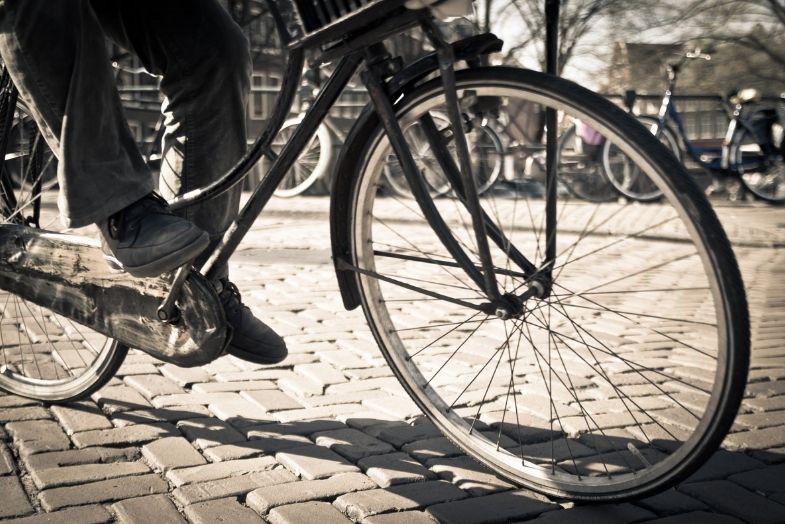
Can Men Ride Women’s Bikes?
Yes! Although there are some differences with gendered bikes, most tend to be unisex. There’s no reason why a man can’t ride a woman’s bike.
When you go bike shopping, just make sure you check the fit of the saddle, the handlebars, the suspension, and the brakes. You should be doing this whenever you go bike shopping, but bear in mind the anatomical differences in design and take your cycle for a test ride before making a purchase.
Everyone has a different physique, and you may find that a women’s bike suits you better. Whatever bike makes cycling comfortable and enjoyable for you should be the bike you go for.
You may also be drawn to the style and colour variations of women’s bikes. Don’t be put off by the fact that a bike is ‘designed for women’. If it offers a true reflection of your style and it’s a comfortable ride, it’s a winner!
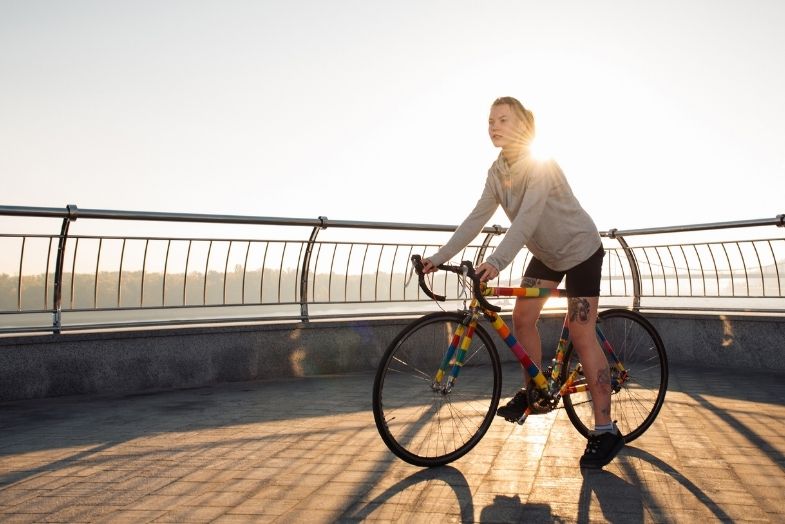
Can Women Ride Men’s Bikes?
Yes! As long as the bike fits properly and it’s a comfortable ride, there’s no reason why women can’t ride men’s bikes.
Remember to check the height guidance for each bike. We already know there are a few anatomical variations, and crank width can be significantly larger on men’s bikes. You should also check that the frame is the right size for you. You can look at the height guidance if it’s provided, or even better, take the bike out for a test ride.
Ensuring your bike fits correctly isn’t just about comfort. A good fit also improves performance and speed. This is true for all bikes, whether they be hybrids, mountain bikes, or electric bikes.
How Do I Know if a Bike is Unisex?
The easiest way to tell if a bike is unisex is to look at the crossbar. On women’s bikes, the crossbar sits tend to sit far lower than it does on men’s bikes. However, the crossbar on unisex bikes takes a neutral position.
This will look like a ‘v-shape’ frame rather than a low or high frame. The design is made to consider the anatomical differences of the female torso, and it’s still accessible for men, too.
The only real difference on a unisex bike is that the crossbar is vertical and slightly angular. You’ll also find less gender-specific colourings and designs too, to cater to any and all tastes.
Unisex bikes can be any bike – from mountain bikes to road bikes, most bicycles now offer a unisex option. They also aren’t designed to suit gender-specific clothing like women’s bikes, so you can wear whatever clothing you want on a unisex bike.
Gendered bikes may be causing a bit of stir, but they’re undoubtedly made with the best intentions – to improve each rider’s fit, performance, and comfort.
While it’s true that all bikes can be unisex (just like clothes or perfumes can be unisex), you may find that a bike made for your gender provides a better fit. Ultimately, it all comes down to body type.
It’s not uncommon for men to prefer women’s bikes and vice versa. So, next time you’re looking for a new ride, shop around, test ride, and peruse with an open mind – you may be pleasantly surprised!

